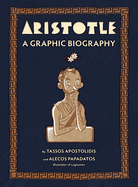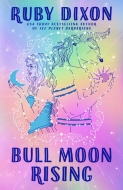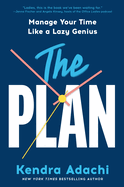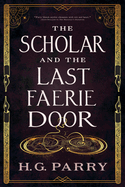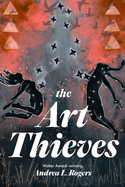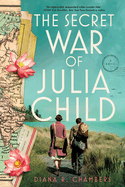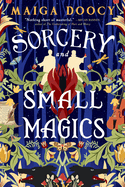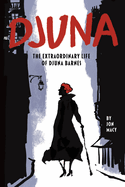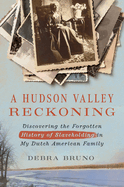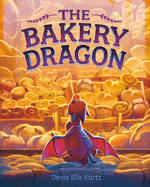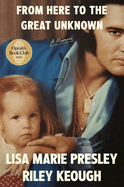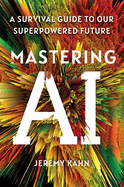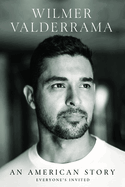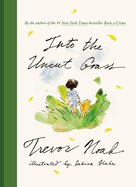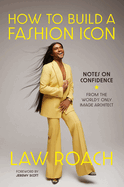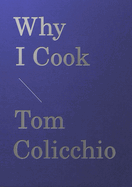Friday, November 1, 2024
In today's issue, we spotlight two extraordinary historical figures with new graphic biographies devoted to their genius and legacies. Tassos Apostolidis delivers a winning treatment of the great philosopher Aristotle with the help of illustrator Alecos Papadatos and translator Tom Imber, with insights that may well surprise even those who believe they know a great deal about him. And artist Jon Macy wondrously depicts the one of the United States' unsung literary figures in Djuna: The Extraordinary Life of Djuna Barnes. Plus, a hunt for magical artifacts turns lustful in Ruby Dixon's fascinating and clever monster romantasy Bull Moon Rising. And teen readers will be thrilled to return the magical universe Sabaa Tahir created for the Ember in the Ashes series and now revisits in Heir, the first in a complex, spellbinding YA saga of love and intrigue.
And in The Writer's Life, Traci Sorell, author of Clack, Clack! SMACK!, and James Vukelich Kaagegaabaw, author of Widom Weavers, share some aspects of Indigenous culture integral to their books and the importance of communities working together to achieve success.
The Secret War of Julia Child
by Diana R. Chambers
A riveting novel set in World War II's Southeast Asian theater imagines critical contributions by the United States's most unlikely intelligence officer: Julia McWilliams Child, beloved chef of French cuisine. The Secret War of Julia Child by Diana R. Chambers is well-documented historical fiction that pays credit to Child's brave and clever intelligence work for the Office of Strategic Services.
Woven among the trials of war is the romance between Julia and brilliant Paul Child, a mapmaker whose Visual Display unit works closely with Julia's. From her arrival in the Pacific arena in March 1944 until Japan's surrender in August 1945, Julia serves in regions vulnerable to enemy attack, even though she claimed in a memoir that she "was not a spy." Chambers unsparingly details the war's tragedies but balances the losses with lighthearted descriptions of friendship, cuisine, and natural beauty. Ceylon (now Sri Lanka), India, and China were vital to Allied defense from Japan, but they were also lands of rare birds, lush scenery, and exquisite flavors. Julia and Paul cautiously develop their relationship while working together, often in tenuous circumstances, to reveal military secrets and thwart espionage. Chambers hints at Julia's future as "the French chef" as they also share "pillowy stuffed dumplings," spicy sauces, and crunchy "mysterious tidbits." The Secret War of Julia Child is a fascinating glimpse into a little-known side of a famous personality and a revealing history of nations often not highlighted in books about World War II. Early in the novel, Julia muses of "tides of war flinging people together, then apart," but readers will celebrate Julia and Paul's happy ending. --Cheryl McKeon, Book House of Stuyvesant Plaza, Albany, N.Y.
Discover: This historical novel highlights the unlikely experiences of Julia Child, "the French chef," who served in a United States espionage agency in the Southeast Asian theater of World War II.
Science Fiction & Fantasy
The Scholar and the Last Faerie Door
by H.G. Parry
A young woman's experience of building friendships and studying curses at an elite magical university sheds light on tensions between the classes, the changing face of war in the early 20th century, and the perils of empire in The Scholar and the Last Faerie Door, a vivid and moving historical fantasy from H.G. Parry (A Radical Act of Free Magic; The Magician's Daughter).
Clover and her brother Matthew both longed for new experiences when they were growing up in their small village in Lancashire. Clover had planned to become a teacher to help her family, but when Matthew returns from the Great War suffering from a faerie curse, she learns of the "magical world that lurked in the corners of our own--the world of mages and scholars, of hedgewitches and spellbooks and old Families." Determined to cure her brother, Clover wins a scholarship to the elite and magical Camford University. There she forms unlikely friendships with golden boy Alden Lennox-Fontaine, impossibly elegant Hero Hartley, and shy, eccentric botanist Eddie Gaskell. But the experiments they undertake uncover dangerous secrets, and not only does their joyous idyll come crashing down but its repercussions also come back to haunt Clover in the years to come.
Parry impeccably conveys the bonds of young friendship, the kind that's a love like no other and can cause pain like nothing else. The beating heart of those friendships keeps Clover's story grounded in reality even as she and her friends speculate about where, exactly, their university is physically located and experiment with forbidden faerie magic. Fans of V.E. Schwab will be enthralled. --Kristen Allen-Vogel, information services librarian at Dayton Metro Library
Discover: The power of friendship and the revelation of dangerous truths propel this novel that follows a young woman's journey through a magical university in 1920s England.
Sorcery and Small Magics
by Maiga Doocy
Instantly lovable characters, a distinct magic system, and delightfully terrifying monsters fill Maiga Doocy's debut novel, Sorcery and Small Magics, the start of an enchanting slow-burn cozy fantasy series.
Leovander Loveage is a scriver--a sorcerer who writes spells for others to cast--and is studying at an elite magical academy solely to satisfy his overbearing father. He is the worst kind of student, always getting into mischief and wasting his days on drinking. He sticks to the simplest of charms and avoids Grandmagic for fear of hurting someone, as his Grandmagic spells inevitably seem to do. Sebastian Grimm is Leo's opposite, a steady and sober caster focused on gaining a coveted spot in the Coterie, the magical military that defends Miendor's border against monsters from the Wilderlands. When a classroom mishap results in Leo being bound to Grimm, the two sworn enemies are forced to work together to break the curse, and their adventures lead them into the most dangerous of circumstances. As they spend time together and meet a variety of complex characters, Leo begins to realize he may have been wrong about Grimm--and maybe about himself, too.
Leo's narration doesn't hide the wounded boy underneath his bluster as much as he'd like, although the details of his trauma are not immediately apparent. Information about the characters and the novel's magic system unfurls slowly, allowing readers to be fully drawn into this richly realized queer-normative world and its sensitive healing of two damaged but beautiful young men. --Dainy Bernstein, freelance reviewer
Discover: In this queer-normative cozy fantasy, two young men who despise each other are forced together peel back each other's layers--and their own--while navigating deadly situations.
Romance
Bull Moon Rising
by Ruby Dixon
The hunt for magical artifacts turns especially horny in Bull Moon Rising, a noblewoman-meets-minotaur romantasy by Ruby Dixon (Bound to the Shadow Prince). Bookish Aspeth is desperate to replace the magical artifacts her father has gambled away over the years, so she can recover her family's standing and secure their holding. Though she has spent her life studying and successfully avoiding marriage, she travels to Vastwarren City with her lady's maid, Gwenna, to join the Royal Artifactual Guild and earn the right to hunt for artifacts.
Hawk has worked for the renowned--and perpetually drunk--Magpie since he joined the Guild, and now he trains Magpie's fledglings, the income from which supports them both. Unfortunately, this year's group is shaping up to be the worst yet. Hawk knows that during the impending Conquest Moon, he--like all other Taurians--will go into a mating frenzy, and he needs someone to help him through it. So, because Aspeth needs a chaperone to be eligible for this male-dominated trade, and the others are completely unfit, she proposes a solution to Hawk: a marriage of convenience.
Bull Moon Rising is a fascinating mix of adventure, patriarchal anthropocentric bureaucracy, and spicy monster romance. Dixon expertly balances clever world-building with steady character and relationship growth, while humor and sexual tension keep the pages turning. Tough days of training and fending off the advances of a fortune hunter are offset by cozy evenings with the found-family vibes of novels such as Travis Baldree's Legends & Lattes, and positively steamy nights. Fans of paranormal romance novels including Lana Ferguson's The Fake Mate and Ali Hazelwood's Bride will devour this. --Suzanne Krohn, librarian
Discover: A sexually frustrated minotaur trains a bookish noblewoman in the art of treasure hunting in this spicy romantasy that's perfect for fans of Bride and Legends & Lattes.
Graphic Books
Aristotle: A Graphic Biography
by Tassos Apostolidis, illus. by Alecos Papadatos, transl. by Tom Imber
The highly accessible Aristotle: A Graphic Biography by Tassos Apostolidis, translated from the French by Tom Imber, may well surprise even those who believe they know a great deal about the philosopher.
Aristotle's student Theophrastus narrates from Athens in 315 BCE, and Greek-born artist Alecos Papadatos (Logicomix) beautifully differentiates between Theophrastus's present and the story he recounts of Aristotle's life (384-322 BCE) by alternating between pen and inks shaded in sky blue and sepia tones. Theophrastus begins by explaining to his students the geography and history that defined Aristotle and his ideas. Born in Macedonia, Aristotle was considered a "metic"--a noncitizen in Athens, where he was a student at Plato's Academy. Aristotle would later be chosen by Philip II to tutor his son, who would become Alexander the Great.
Profoundly affected by the changing politics of his time and his observation of power's wreckage, Aristotle not only came up with his famous "golden mean"--in which a person "chooses the middle ground between two extreme positions"--but also his conviction that "in a city governed by its laws, there must be three separate powers: the legislative, the executive, and the judiciary," the three branches of government that guide the U.S. today.
Author Tassos Apostolidis and illustrator Papadatos provide plenty of humor, too. Aristotle's attraction to beautiful Callida, for instance, inspires the definition of "syllogism." More than 2,000 years old, Aristotle's ideas are more relevant than ever. As Aristotle puts it in his passionate defense of Plato's Academy, "Philosophy makes us see the world as it is, but it also makes us see how it could or should be." A golden companion for our times. --Jennifer M. Brown, reviewer
Discover: This winning graphic biography expertly conveys the life and ideas of a philosopher whose love of wisdom and passion for sharing it is every bit as infectious today as it was two millennia ago.
Djuna: The Extraordinary Life of Djuna Barnes
by Jon Macy
The singular life of one of the United States's unsung literary figures is wondrously illustrated in Djuna, a graphic biography by artist Jon Macy. Most know Djuna Barnes (1892-1982) for her modernist novel Nightwood, published in 1936. Barnes started out as a freelance journalist in Brooklyn, where she gained attention as a "stunt reporter" in the 1910s, famously undergoing a forced feeding to experience what imprisoned hunger-striking suffragettes endured. In the 1920s, she moved to Paris, the hub from which she would go on to rub her dramatically cloak-draped shoulders with the artistic and literary glitterati of the era, including T.S. Eliot, James Joyce, and Peggy Guggenheim. Paris was also where she met the biggest--and last--love of her life: the sculptor Thelma Wood.
Macy constructs his paean in three acts: Barnes's abusive childhood in a polygamous utopian community on rural Long Island, her years writing and loving abroad in Berlin and Paris, and her defeated return to the U.S. after her relationship with Wood ended and her "intentionally lonely life" as a hermit in Greenwich Village began. The muted color palette Macy uses sets off the striking burgundy of Barnes's hair, and his ability to transform Barnes's sublime features into a demonic mask of fury when angered is frighteningly effective.
In Djuna, Macy reveals an extraordinary woman of contradictions: Barnes was a modern woman who longed for stability and privacy, yet craved acclimation and fame. Indeed, "the only label she accepted was genius," Macy observes. Djuna is a superb and long overdue treatment of this fascinating woman. --Peggy Kurkowski, book reviewer and copywriter in Denver
Discover: This beautifully illustrated graphic biography of the unsung feminist and literary icon Djuna Barnes brings her life, time, and accomplishments back into delicious frame.
History
A Hudson Valley Reckoning: Discovering the Forgotten History of Slaveholding in My Dutch American Family
by Debra Bruno
When journalist Debra Bruno learned that her Dutch ancestors, settlers in New York's Hudson River Valley in the 1600s, were "probably" slave owners, her "first reaction was defensive." Surely they were too poor and lived too far north. But when she traced her roots back to her "five times great grandfather," she was distressed to find that his 1796 will included his "slaves male and female" alongside his "land, horses, feather beds, and wagons."
"Grappling with this ancestral burden," Bruno became determined to research her family and the people they enslaved. A Facebook group, "I've Traced My Enslaved Ancestors and Their Owners," connected her with Eleanor Mire, a woman descended from enslaved people owned by Bruno's predecessors. Bruno and Mire, known as "linked descendants" in genealogy circles, enthusiastically shared their findings, discovered a common ancestor, and eventually visited her gravesite together.
In A Hudson Valley Reckoning, Bruno documents slavery in New York, where enslaved people accounted for 28% of the Catskill population in 1790, and the enactment of a murky 1817 abolition law, "with so many caveats and lingering restrictions," continued to deny emancipation to many. She includes recent attempts at reckoning with this history, such as the opening of Sojourner Truth State Park, and calls for more.
American history buffs may gasp when Bruno mentions familiar names, such as Petrus Stuyvesant, who created a thriving business by importing enslaved people to New York during the mid-1600s. Bruno might have collected these facts into a stuffy academic tome, but this history is a fast-paced read, replete with vividly depicted portraits of hundreds of lives. --Cheryl McKeon, Book House of Stuyvesant Plaza, Albany, N.Y.
Discover: This meticulously documented history of the practice of slavery in New York's Hudson Valley includes detailed accounts of enslaved people and documents the state's culture of slavery and abolition.
Essays & Criticism
Here, Now
by Michelle Suzanne Mirsky
Michelle Suzanne Mirsky's compulsively readable debut essay collection, Here, Now, is a candid exploration of a life set adrift before and after the death of her three-year-old son, Lev, and her divorce. Mirsky, a former columnist for McSweeney's Internet Tendency, covers a lot of ground in 18 essays and fewer than 200 pages. In "No Mas," Mirsky addresses replacement child syndrome, reckoning with an old friend's similar tragedy and revealing how she felt the psychological and biological urge to have a baby as her own child slowly died. In "Solipsists Do It for the Folks Watching at Home," Mirsky describes losing her inhibitions in the wake of losing her son and how she shed her old friends in the process of moving elsewhere but found new, younger ones, as well as lots of sex.
On the first anniversary of Lev's death, and on subsequent anniversaries, Mirsky narrates what she does. Using her signature declarative sentence structure in the titular essay, she writes about the first anniversary: "I take the day off work. I get a tattoo. I drink whiskey. I meet an idol. I'm always in love. My heat is on the outside of my body, bruised and screaming."
Mirsky's irreverence and casual, blog-like tone might not be for everyone. She's self-aware, even conceding, "I am vain and a know-it-all." However, fans of Jenny Lawson will find a home here, as will readers who want an inside view of how life might go on after some of their worst nightmares come true. --Nina Semczuk, writer, editor, and illustrator
Discover: Michelle Suzanne Mirsky's debut essay collection is a poignant, irreverent, and personality-filled exploration of what it means to live after death, divorce, and relocation.
Psychology & Self-Help
The Plan: Manage Your Time like a Lazy Genius
by Kendra Adachi
Planners, get your highlighters ready, because The Plan: Manage Your Time like a Lazy Genius is a book that's dying to be highlighted. Kendra Adachi regularly speaks and writes about what it means to be a "lazy genius." Her podcast and first two books encourage readers to be "a genius about the things that matter and lazy about the things that don't." In The Plan, Adachi applies this approach to time management, offering a refreshing take on productivity culture that is "drenched in humanity and compassion"--a welcome divergence from the "traditional white-male experience" she notes is too often centered in time-management books. To that end, The Plan is organized into three parts: principles (exploring "why before you learn how"), strategies that Adachi promises are "practical, tangible, and without an ounce of bootstrap energy," and pep talks to reference when efforts go awry. Because, as Adachi drives home again and again, time-management efforts will go awry. That's life!
While some of the method and approaches suggested here will be familiar to many, Adachi's framing feels novel. This ultimately makes The Plan a welcome addition to an already crowded genre. Adachi is not urging readers to get more done, to "hack" their days, or to perfect a rigid routine to maximize output. Instead, she is inviting them to embrace a new way of thinking about time and time management. The Plan is sure to spark inspiration not just for the type A planners of the world but also for anyone trying to figure out how to stop drowning under calendar alerts and to-do lists and find presence in the moments that really matter. --Kerry McHugh, freelance writer
Discover: This welcome addition to the genre of time-management books encourages readers to frame their time in new ways, inviting flexibility and compassion into too-busy days.
Nature & Environment
Eavesdropping on Animals: What We Can Learn from Wildlife Conversations
by George Bumann
The necessity of living in harmony with nature is a ubiquitous challenge of the early 21st century, but short of abandoning civilization and moving to the wilderness, many struggle with how to do this. In Eavesdropping on Animals, George Bumann illustrates how anyone--including urban dwellers--can tap into and become a conscious and responsible participant in interspecies conversations.
The first part of the book, "A Sense for Your Surroundings," eases readers into a mindset of "eavesdropping" on animals by explaining several contexts, including human and animal senses. In the second part, "What Animals Are Telling You," Bumann gets specific about how to discern the meanings of wildlife sounds, such as the "trumpeting of a goose at the community duck pond," "the yips of a ground squirrel," "a coyote barking on a hilltop," and the "yowling, cat-like cry" of a bobcat. The third part, "Going Deeper into Space," builds on the opening of the senses accomplished in the previous parts and provides guidance on personal practices to optimize the gains of eavesdropping on animals, including knowing what they're saying about humans and responsibly entering the conversations.
Bumann's unmitigated delight in being part of wildlife conversations is palpable and contagious. He draws on anecdotes from friends, experts, and students, in addition to his own experiences of childhood hunting lessons, turkey-calling competitions, research trips, and teaching, to vividly portray the benefits of his methods, which build on "Indigenous ways of knowing." An appendix that summarizes each chapter's suggested exercises allows readers to continue learning, pointing the way forward to serenity amid the beautiful cacophony. --Dainy Bernstein, freelance reviewer
Discover: With an abundance of anecdotes and suggested exercises, Eavesdropping on Animals demonstrates the benefits and possibilities that await readers attuned to the wildlife conversations around them.
Children's & Young Adult
Heir
by Sabaa Tahir
Heir is a complex, spellbinding YA saga of love and intrigue that is set in the familiar magical universe of the An Ember in the Ashes series, by National Book Award winning-author Sabaa Tahir (All My Rage).
"Small-boned, light-skinned" Aiz bet-Dafra, 18, is an orphaned "gutter child" in the crowded city of Kegar. The vile highborn commander of the air squadrons, Tiral bet-Hiwa, bombs and pillages other lands for food. When Aiz attempts to kill Tiral--who has murdered many of her fellow orphans--she is thrown into prison. There, the blessed Mother Div manifests and aids Aiz's escape, promising that the girl will save "the poor and wretched of Kegar."
Thousands of miles away, dark-haired, gold-skinned prince Quil is the reluctant heir to the Martial throne. The 20-year-old has been trained to fight by the "greatest warrior in the Empire." When the palace is destroyed in an unexpected Kegari attack, Quil is sent on a mission to retrieve a mysterious weapon that will save the Empire.
Twenty-year-old, "blue-black hair and brown"-skinned Sirsha Westering comes from a line of powerful magic-wielders, the Jaduna. Her magic lies in tracking and binding the magic of others, but she's been banished by the Jaduna and forbidden to use her powers on pain of death. When the royal palace is attacked, Sirsha's path, her mission, and her heart collide with Quil.
This first electrifying book in a duology occurs 20 years after the events of the final An Ember in the Ashes book. In Heir, Tahir's three narrators take turns driving the story, their compelling tales merging into one serendipitous, exhilarating return to a beloved world. --Lynn Becker, reviewer, blogger, and children's book author
Discover: This first book in a spellbinding new duology set in the same world as the An Ember in the Ashes series is a complex saga of love, magic, and intrigue delivered by a gifted storyteller.
The Art Thieves
by Andrea L. Rogers
In The Art Thieves, Walter Award-winner and citizen of the Cherokee Nation Andrea L. Rogers (Man Made Monsters) returns with a stirring story about choosing to create a new future when disaster seems inevitable.
The world is ending; or at least, that's what it seems like to Stevie who, along with the rest of the planet, is experiencing "a cycle of drought and super-storms" during what she and her friends call "the denouement of the world." Stevie, a Cherokee teenager living in Texas, works at an art museum. She is earning money to go to college locally and stay near her loved ones: her parents and little brother Levi, who has "life-threatening allergies." At the museum, Stevie meets artist intern Adam, a Costa Rican woodcarver. Adam is enigmatic and, as the teens grow closer, he admits to her that he is from "seven generations in the future." He "was raised with one purpose," he says. "To make the future better."
Rogers's sophomore YA novel skillfully discusses the current affairs, pop culture, and climate-change related extreme weather events of the future and powerfully relates them to historical and contemporary legacies of racism and oppression. Rogers also illustrates how art and its legacy can speak truth to power and help build a better future. This provocative and insightful work of Cherokee futurism projects and imagines the kinds of decisions and personal sacrifices people might need to make to improve the world, and is an excellent choice for fans of Nnedi Okorafor or Octavia Butler. --Michelle Anya Anjirbag, freelance reviewer
Discover: Award-winning author Andrea L. Rogers paints a stunning picture of what it means to hope for a better future and the strength it might take to make that future real.
Animal Countdown
by Laura Vaccaro Seeger
Does Laura Vaccaro Seeger's inventiveness never cease? In Green, Blue, and Red, the two-time Caldecott Honoree employed a die-cut technique to frame and pay tribute to, among other things, aspects of the natural world. In Animal Countdown, she uses flaps to create a peekaboo-style game that can introduce the youngest readers to counting basics while raising awareness about vulnerable animals to boot.
In the book's first spread, its left side presents the word "ten" against what looks kind of like blue-and-white marbling. This faces a full-page flat-brown panel out of which a small rectangle has been cut, exposing more marbling in which can be discerned a blue numeral 10. What could the big brown flap be hiding? Small fingers will be able to effortlessly flip the flap to uncover 10 furry-headed, bewhiskered pals: "sea otters." The blue-and-white stuff? It's the otters' frothy, watery home. On it goes, from "ten" down to "one." For that final spread, a black numeral "1" on what looks like white fur turns out to be the markings on a lone snow leopard's nose.
Seeger's mixed-media art manages to be painterly but approachable, the animal depictions realistic but something a toddler would welcome in stuffed-animal form. A companion to Seeger's conceptually similar The Hidden Alphabet, Animal Countdown concludes with news that all the featured animals are either endangered or threatened. Generous back matter illuminates the creatures' distinctive qualities; perhaps this will inspire readers of all ages to try to head off a countdown to animal extinction. --Nell Beram, freelance writer and YA author
Discover: This inventive picture book uses flaps to create a peekaboo-style game that can introduce the youngest readers to counting basics while raising awareness about vulnerable animals.
The Bakery Dragon
by Devin Elle Kurtz
A tiny, adorable dragon finds treasure and friendship in an unlikely place in the sweet, luminous picture book The Bakery Dragon by Devin Elle Kurtz (illustrator, Mother of Sharks),
"There's nothing a dragon loves more than gold." The narration opens on a spread of a toddler-sized, horned, red dragon named Ember curled on a pile of golden treasure and peering out at the reader through one shadowed, amber eye. Ember loves gold as much as his larger, townsfolk-robbing peers, but he's too cute to successfully intimidate humans out of their valuables. He watches a flight of larger dragons in a rainbow of hues fly home at sunset laden with treasure, and a glint of gold draws him to the darkening village. Ember finds a splendid, glowing bakery window filled with bread. The kind baker invites the dragon in and introduces him to the magic of baking. "Ember didn't know you could MAKE gold," but he and his dragon brethren love the taste of the "buttery and rich" treasure. Then Ember has a brilliant idea and leads the other dragons back to the bakery, where he masterminds a baking bonanza. In the festive final spread, the villagers gather outside the bakery to share bread and receive their returned valuables, with the implication that loaves have replaced looting.
Kurtz's digital illustrations of gold-filled lairs, cozy bakeries, and the bucolic fantasy landscape are bathed in a warm, comforting light. Her characters have expressive, endearing faces, and her different styles of dragon tend toward the colorful and whimsical rather than the frightening. This cheerful, friendly story of someone small accomplishing something big should resonate with little readers. --Jaclyn Fulwood, youth services manager, Allen County Public Library
Discover: An adorable dragon learns to bake bread instead of stealing gold in this cozy, friendly picture book.
In the Media
The Writer's Life
Traci Sorell and James Vukelich Kaagegaabaw: Indigenous Ways in a Modern World
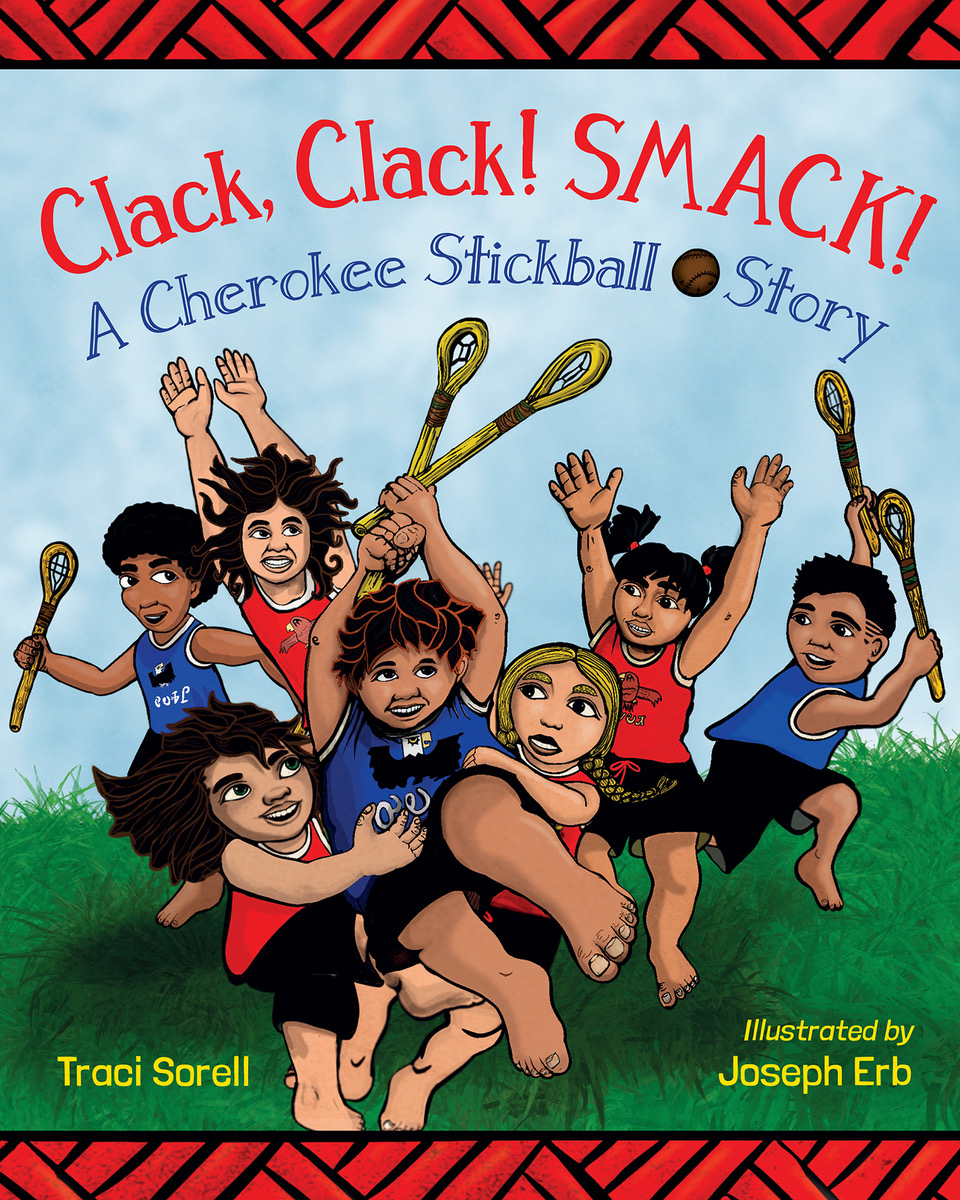 |
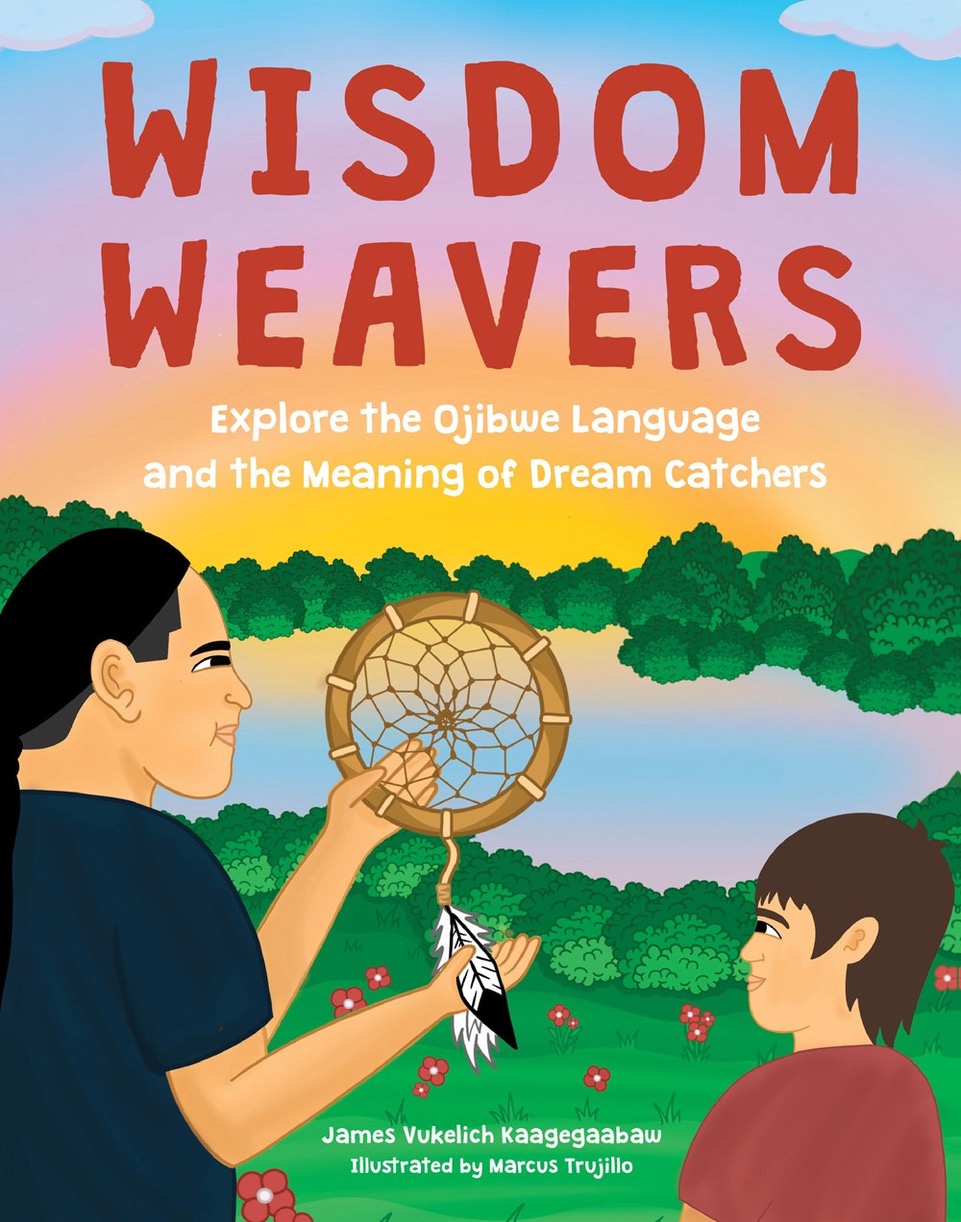 |
Two-time Sibert Medal winner and Boston-Globe Horn Book Award honoree Traci Sorell writes inclusive historical and contemporary fiction and nonfiction for young people. Her books include We Are Grateful: Otsaliheliga, At the Mountain's Base, and Mascot. A former federal Indigenous law attorney and policy advocate, Sorell is a Cherokee Nation citizen and first-generation college graduate. She lives within her tribe's reservation in northeastern Okla.
James Vukelich Kaagegaabaw, a descendant of Turtle Mountain, is an international speaker, author, educator, and social media personality who shares Indigenous wisdom for a life well lived. His keen insights were developed through speaking with and recording elders and native language speakers across North America as part of the Ojibwe Language Dictionary Project. He lives in Minnesota's Twin Cities.
Here, Sorell and Kaagegaabaw discuss their 2024 titles, Clack, Clack! SMACK! (Charlesbridge, $17.99) and Wisdom Weavers (Quarto, $18.99), respectively, and the importance of publishing books for children in Indigenous languages.
Traci Sorell: Siyo, hi, James!
James Vukelich Kaagegaabaw: Boozhoo, hello, Traci!
Sorell: I'm delighted to visit with you about Wisdom Weavers. I love that the picture book centers on a dream catcher, which is probably the most recognizable (at least to non-Ojibwe people) item of Ojibwe culture. What was the story's genesis?
Kaagegaabaw: I wanted to share the story of taking my son out to harvest red willow. This happened during the pandemic, and I wanted to record that unique and special time in our lives. I also really wanted to share cultural topics like the Seven Grandfather teachings, the Ojibwe name for a dream catcher, and some of the stars and constellations in Ojibwe.
Sorell: I love that Wisdom Weavers captures a special time for you and your son, then brings it forward with more cultural and linguistic teachings for everyone. I initially wondered if your focus was to debunk the common misunderstanding that dream catchers are just a "Native" cultural item. I loved the deep dive into its Ojibwe cultural significance; it's important to show young people that while Native Nations have many commonalities, we also have distinct languages, cultural practices, and worldviews. So wado, thank you, for shining a light on that.
I appreciated having the QR codes on the page to provide the pronunciation of the Ojibwe words. Was that your idea or something that came up during the book design phase? Did you plan to have the other Ojibwe words shown on each double page spread or were those selected after you saw Marcus Trujillo's illustrations?
 |
|
| James Vukelich Kaagegaabaw | |
Kaagegaabaw: Miigwech, thank you! We chose to use QR codes as the book developed. I was excited to be able to share the language and to give parents and educators an opportunity to hear and use the language, either in a classroom setting or at storytime. The QR codes are nice because it doesn't place the responsibility of correct pronunciation on the educator or parent. They can simply scan with their phone and listen to an authentic pronunciation of the Ojibwe words.
We actually developed the vocabulary for each spread before Marcus came up with the illustrations. It's a testament to his outstanding work that he was able to incorporate all the vocabulary words in his illustrations in such a beautiful way.
I really enjoyed seeing the Cherokee perspective of lacrosse in Clack, Clack! SMACK! Many Woodland Nations still play both traditional and competitive lacrosse--why did you select that game for your book?
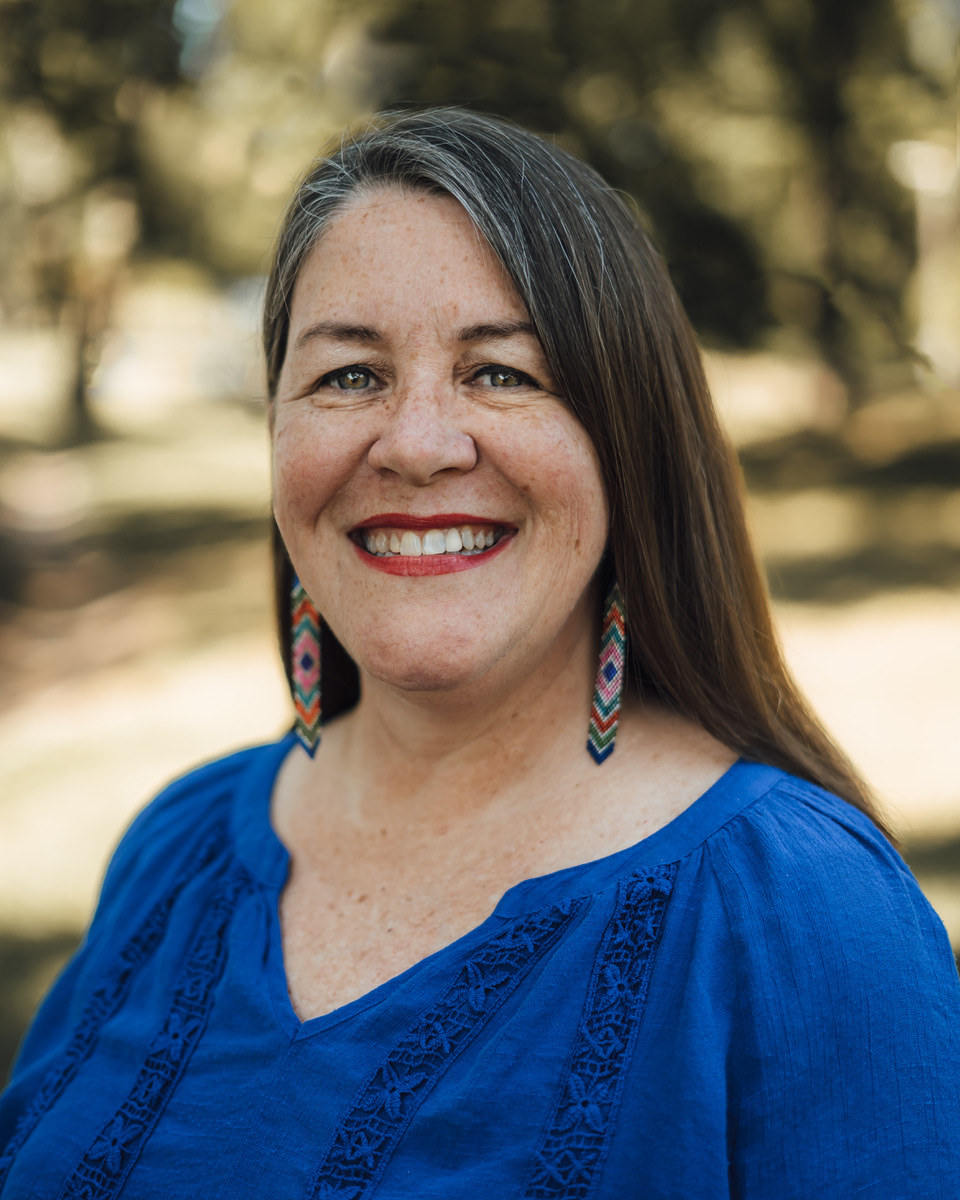 |
|
| Traci Sorell (photo: Cody Hammer) |
|
Sorell: I wanted to push back on the mainstream culture messaging in this country of individualism, being "the hero" and winning. In Cherokee culture, our teachings focus on the collective and using our gifts and abilities to help and care for others. We have a social stickball game that our kids play in PE class at our language immersion school, in our communities, and at ceremonial grounds. Certainly, we're competitive and the game can be rough, but the focus is on the team and not the individual. In Clack, Clack! SMACK!, Vann is a child who is taller and more muscular, so one would think he's coordinated and super-fast. But he's not. I think this game is a wonderful way to help young people see that contributing in any way is what's important.
Kaagegaabaw: Did you have to research the stickball words in Cherokee for this book?
Sorell: When Cherokee stickball players are on the field, they use our language to communicate. So, I didn't want the characters speaking English. I contacted a few friends who play stickball regularly and asked what would be said in each scene. I worked with John Ross, a Cherokee first language speaker, to ensure that I got the syllabary correct, as well as the English phonetics shown in the main text. I love the community one finds across Native Nations that is willing to assist in helping a story be culturally accurate as well as centered on the Indigenous folks featured in it. There's also an all-Cherokee syllabary version translated by Mr. Ross for Cherokee language speakers and learners that's available in e-book format. I'm super excited about that!
Kaagegaabaw: That's great news that there is a Cherokee version of your book! When I taught at an Ojibwe immersion program, it was so important to have children's books written in the language. There is a considerable shortage of books in our languages.
Was the translation into Cherokee difficult? Sometimes the languages are so different.
Sorell: I agree that we need more books written in our languages. As we look at growing first language learners within the Cherokee Nation from babies, we have a couple of programs that rely on first language speakers and materials created by the tribe's translation department. I'd love to see more beautifully illustrated board books, picture books, and chapter books in the Cherokee syllabary.
The Cherokee language bears no resemblance to English at all. It's about 80% verbs. It's polysynthetic, meaning that what looks like a single word can be an entire sentence. For example, "otsaliheliga" is the sentence "We are grateful" in English. There are prefixes and suffixes added to the root verb. There are also ways to describe something based on what state it is in, e.g., a solid, liquid, gas, etc., that English doesn't have. So, it's not translating the text, but rather thinking and seeing what is communicated in a Cherokee worldview. That's why having a first language speaker who also does freelance translation work for publishers is SO helpful. Mr. Ross does understand both worlds, which are very different.
Kaagegaabaw: Yes, in my keynotes I point out that Ojibwe, Dakota/Lakota/Nakota and Haudenoshaunee are as different from each other, comparatively speaking, as German, Mandarin Chinese, and Somali--three different languages spoken on three different continents by three different nations of people.
Sorell: Great point! So, how did your language learning come about? I've seen you sharing on social media. Do you also formally teach the language?
Kaagegaabaw: I began learning the Ojibwe language at age 25. My mother, uncles, and grandmother all went to boarding and residential schools, so they had little to no access at all to the language, culture, history, and spirituality. I was fortunate to have the opportunity to learn from fluent first language speakers, professors, elders, medicine people, and hereditary Chiefs, as well as the world's leading linguistic expert in the language. I worked as an Ojibwe educator (pre-k through university) for the past two decades, but now I am exclusively speaking, writing, and creating content for my various social media platforms.
Sorell: What are you working on next?
Kaagegaabaw: I don't have any new books publishing right now but I'll continue making videos based on the Ojibwe language for my YouTube Channel and other social media platforms. How about you?
Sorell: I have an acrostic poem in the Banned Together young adult anthology coming out in Spring 2025 and books coming in 2026. My focus is definitely to keep centering and incorporating the Cherokee language into my work.
Kaagegaabaw: Miigwech, Traci. It is so nice to meet you!
Sorell: Wado, James! I have enjoyed learning more about you and your commitment to sharing the Ojibwe language and culture. Our languages, our culture, and our ways of being continue to be part of our lives in this complicated, modern world. Miigwech!
Book Candy
Book Candy
"Tove Jansson murals, with hidden Moomins, seen for first time in Helsinki show," the Guardian reported.
---
Headed home to Peru for a new movie, Paddington Bear got his passport "with a little help from the Home Office," Mental Floss noted.
---
Merriam-Webster shared its Longest Long Words List, cautioning: "Don't read this if you have hippopotomonstrosesquippedaliophobia (fear of long words)."
Rediscover
Rediscover: Charles Brandt
 Charles Brandt, author of the bestselling true-crime book I Heard You Paint Houses, died on October 24 at age 82. I Heard You Paint Houses: Frank "The Irishman" Sheeran and Closing the Case on Jimmy Hoffa (Steerforth) was adapted by Martin Scorcese into The Irishman (2019), starring Robert De Niro, Al Pacino, and Joe Pesci.
Charles Brandt, author of the bestselling true-crime book I Heard You Paint Houses, died on October 24 at age 82. I Heard You Paint Houses: Frank "The Irishman" Sheeran and Closing the Case on Jimmy Hoffa (Steerforth) was adapted by Martin Scorcese into The Irishman (2019), starring Robert De Niro, Al Pacino, and Joe Pesci.
Brandt was a former junior high school English teacher who worked his way through Brooklyn Law School as a welfare investigator in East Harlem. After graduating law school, he became a homicide detective and prosecutor in Wilmington, Del., and served as the state's chief deputy attorney general. During his years in law enforcement, he handled more than 50 murder cases. In private practice since 1976, he was a president of the Delaware Trial Lawyers Association and the Delaware Chapter of the American Board of Trial Advocates.
Brandt also wrote the detective novel The Right to Remain Silent. His final book, Suppressing the Truth in Dallas: Conspiracy, Cover-Up, and International Complications in the JFK Assassination Case, concluded that the Mafia played a role in the assassination of President Kennedy. In addition, Brandt co-authored Joe Pistone's Donnie Brasco: Unfinished Business and Lin DeVecchio's We're Going to Win This Thing: The Shocking Frame-Up of a Mafia Crime Buster.


